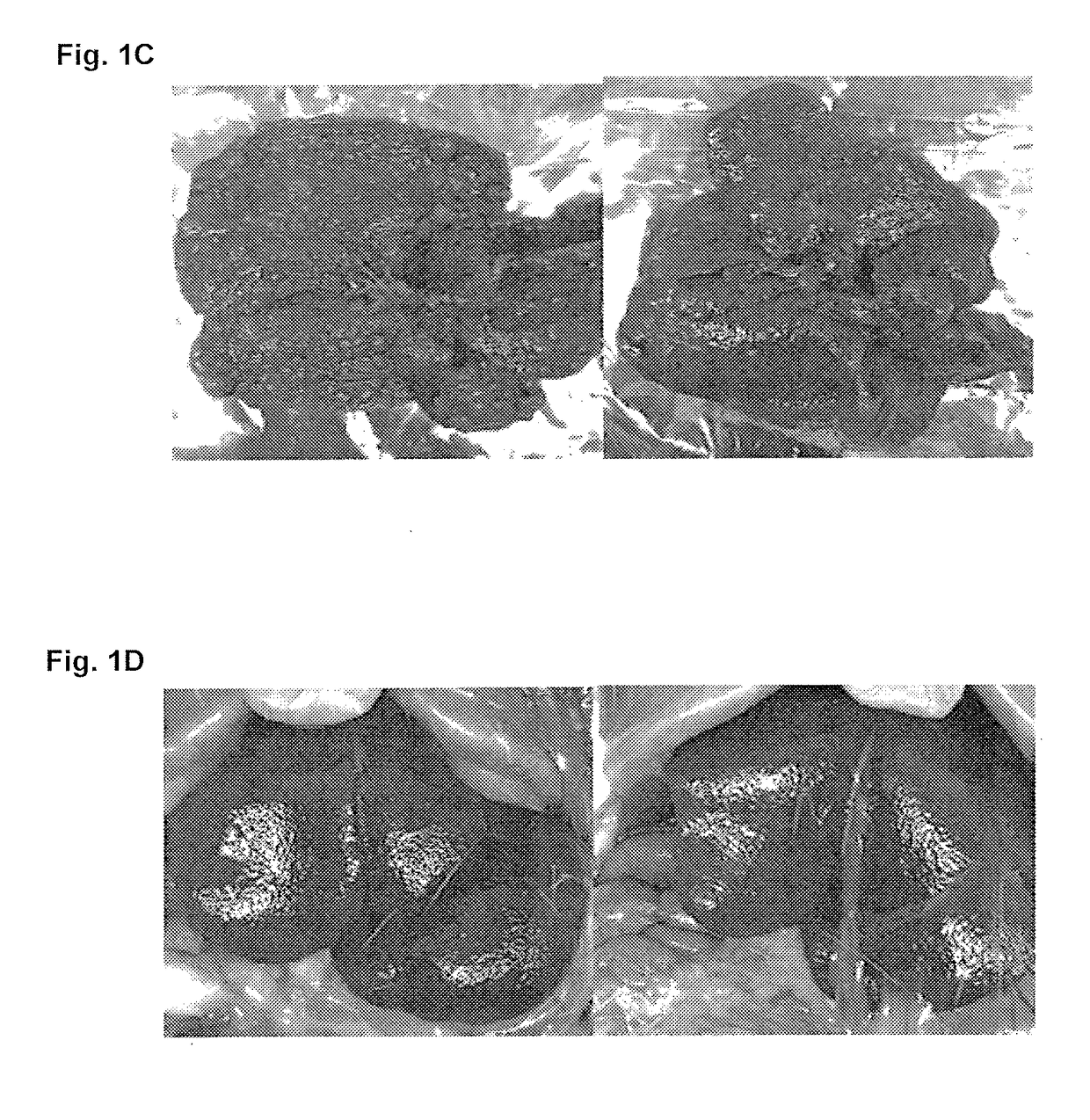Treatment for hepatic fibrosis
a fibrosis and hepatic technology, applied in the field of hepatic fibrosis treatment, can solve the problems of liver fibrosis, chronic liver injury and hepatic fibrosis, interfering with the normal function of the tissue, etc., to improve the condition related to bile acid or cholesterol metabolism, reduce liver fat levels, and reduce blood cholesterol concentration.
- Summary
- Abstract
- Description
- Claims
- Application Information
AI Technical Summary
Benefits of technology
Problems solved by technology
Method used
Image
Examples
example 1
Thioacetamide (TAA)-Induced Fibrosis—Model for Hepatic Cirrhosis
[0223]Liver fibrosis was induced in Wistar rats by intraperitoneal injections of TAA (20 mg / 100 gr body weight) twice per week during 10 weeks. I.p. application of TAA results in hepatic centrolobular necrosis, elevated transaminase activity and robust liver fibrosis. Treatment groups further included co-administration of Aramchol (1 or 5 mg / kg orally) or obaticholic acid (OCA, 5 mg / kg). A control group of saline-treated rats (in the absence of TAA administration) was further included. Rats were then sacrificed, and livers were observed macroscopically for signs of cirrhosis and necrotic lesions, and microscopically, following Masson Goldner staining. The fibrosis score, calculated at a scale of 0-4, was determined for each sample, wherein 0 indicates no fibrosis and 4 indicates advanced fibrosis and cirrhosis.
[0224]As can be seen in FIGS. 1-2, treatment with Aramchol (5 mg / kg) significantly prevented TAA induced fibros...
example 2
Inhibition of Collagen Synthesis in Stellate Cells
[0227]LX2 cells (150,000 cells per well) were plated in DMEM media containing antibiotics, glutamine and bovine fetal serum. After 24 hours incubation, media was changed to 0% serum and incubated for an additional period of 16 hours. Then, Aramchol (10 mM) was added and 24 hours later RNA was extracted with Trizol.
[0228]Surprisingly, as can be seen in FIGS. 3 and 4, COL1A1 expression in LX-2 human hepatic stellate cells was reduced by Aramchol via PPARγ up-regulation.
[0229]Consistently, Aramchol significantly down regulates collagen production in LX-2 human hepatic stellate cells relative to a DMSO control (FIG. 5). Again, Aramchol was surprisingly found to be effective in reducing the production of collagen specifically in stellate cells.
example 3
Aramchol Reduces Established Fibrosis in a MCD Diet Animal Model
[0230]The study described below investigates the mechanism of action of Aramchol and its potential effect on fibrosis using the 0.1% methionine- and choline-deficient (0.1MCD) diet mouse model of NASH.
[0231]C57B1 / 6 were fed the Methionine and Choline Deficient (MCD) and control diet and were sacrificed after 4 weeks. The MCD diet induces aminotransferase elevation and changes in hepatic histological features, characterized by steatosis, local inflammation, hepatocyte necrosis and fibrosis. These changes occur rapidly and are morphologically similar to those observed in human NASH. In this study the MCD diet contained 0.1% methionine to minimize and stabilize weight loss. At the end of the second week, after verification of established NASH, 0.1MCD-fed mice were treated orally by gavage with Aramchol (5 mg / Kg / day) or vehicle (n=10, each condition). Control diet-fed mice were also treated with vehicle for same duration (n...
PUM
| Property | Measurement | Unit |
|---|---|---|
| Fraction | aaaaa | aaaaa |
| Fraction | aaaaa | aaaaa |
| Time | aaaaa | aaaaa |
Abstract
Description
Claims
Application Information
 Login to View More
Login to View More - R&D
- Intellectual Property
- Life Sciences
- Materials
- Tech Scout
- Unparalleled Data Quality
- Higher Quality Content
- 60% Fewer Hallucinations
Browse by: Latest US Patents, China's latest patents, Technical Efficacy Thesaurus, Application Domain, Technology Topic, Popular Technical Reports.
© 2025 PatSnap. All rights reserved.Legal|Privacy policy|Modern Slavery Act Transparency Statement|Sitemap|About US| Contact US: help@patsnap.com



